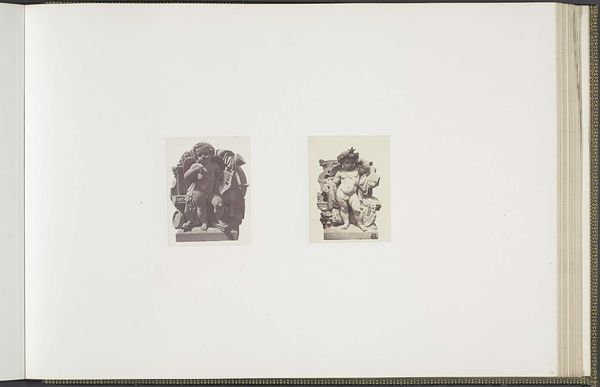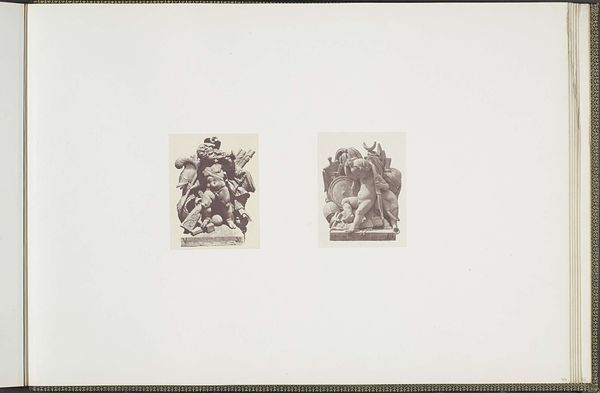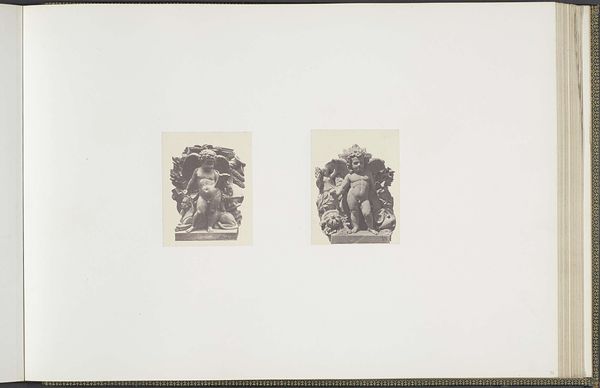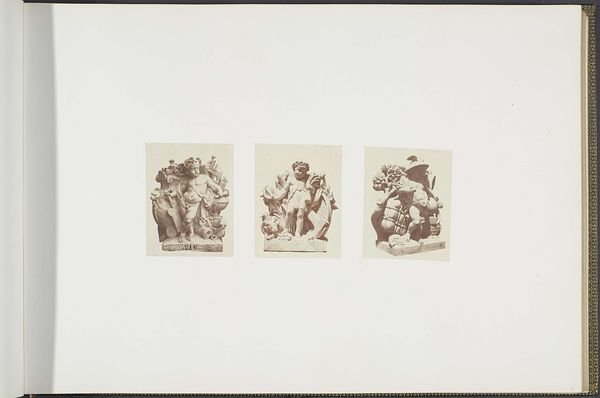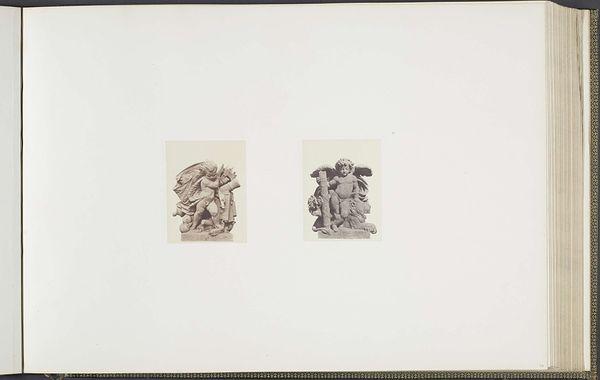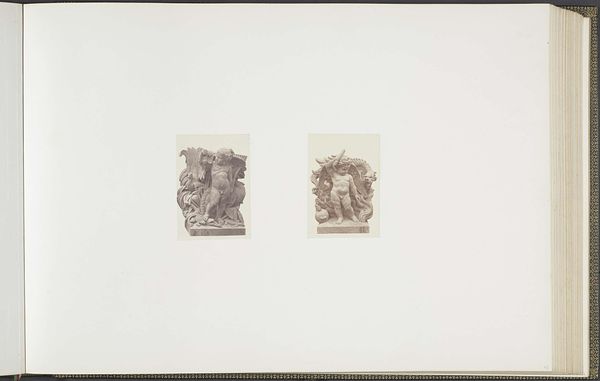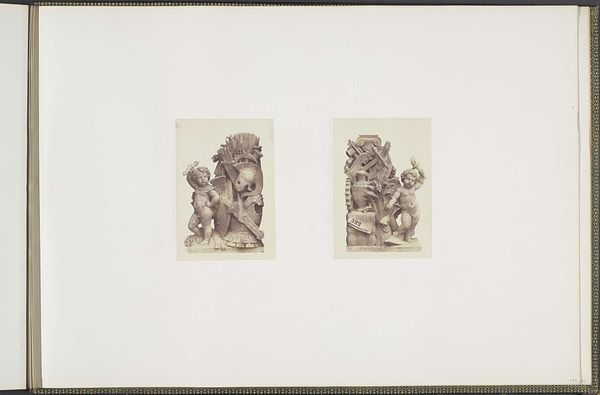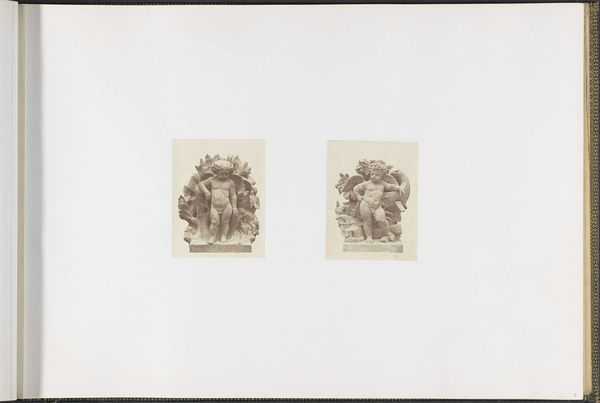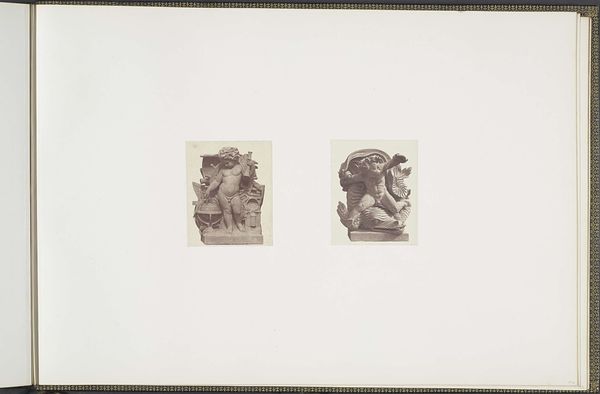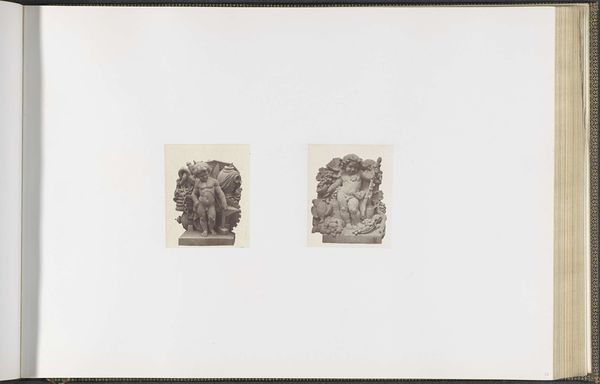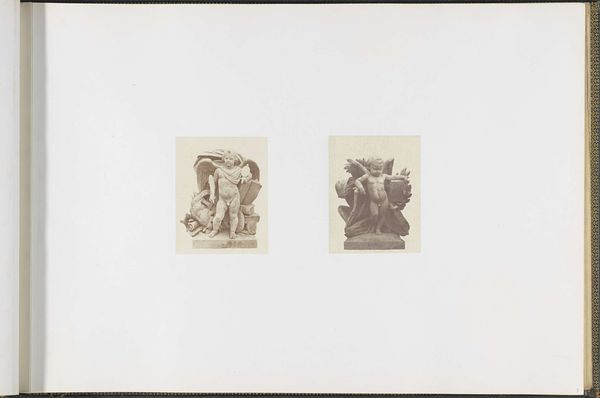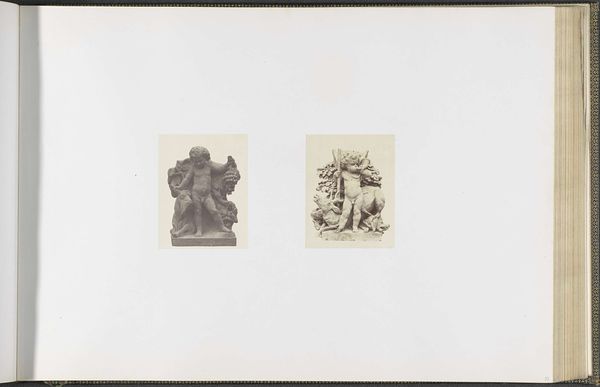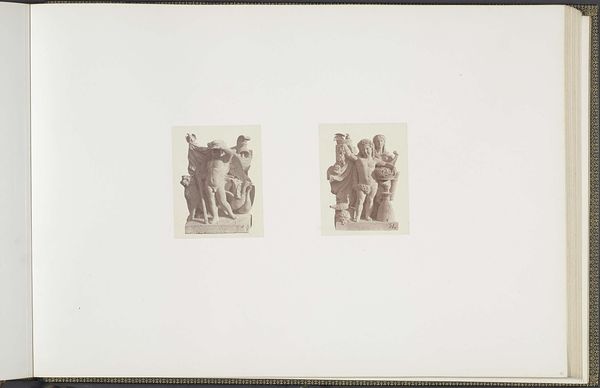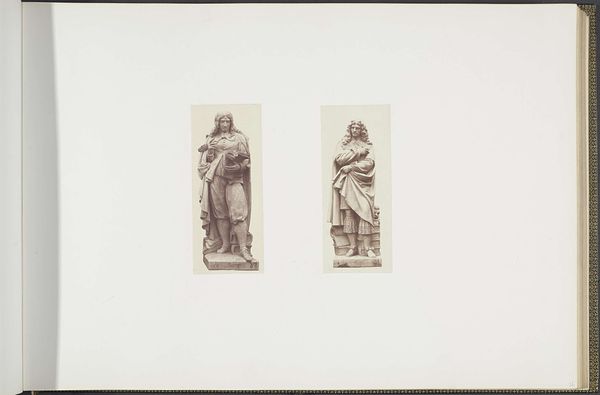
Gipsmodellen voor beeldhouwwerken op het Palais du Louvre: links "La Mécanique" door Charles Capellaro en rechts "La Chasse" door Auguste Jean Baptiste Lechesne c. 1855 - 1857
0:00
0:00
print, photography, sculpture
#
portrait
#
neoclacissism
# print
#
photography
#
sculpture
#
carved
Dimensions: height 378 mm, width 556 mm
Copyright: Rijks Museum: Open Domain
Curator: This arresting print presents photographic studies of plaster models for sculptures on the Palais du Louvre. Edouard Baldus, a master photographer, captured these around 1855 to 1857. I'm immediately struck by the composition, with each image so carefully isolated within the larger frame of the book. Editor: Yes, that isolation creates a striking tension. The models themselves seem like remnants, almost ghostly in their plaster form. I see echoes of classical ideals filtered through a distinctly 19th-century lens. There’s something very cold and distant in their presentation. Curator: Indeed, that coolness speaks volumes about the era. Neoclassicism, while looking back to antiquity, was deeply enmeshed in the political and social structures of the time. These sculptures, "La Mécanique" by Charles Capellaro and "La Chasse" by Auguste Jean Baptiste Lechesne, aren’t simply decorative; they symbolize France’s aspirations. They embody concepts considered key to the empire’s identity. Editor: It is very strategic isn't it? The photographic medium adds another layer to that political narrative. By reproducing these models in a photographic print, Baldus made art reproducible and circulated imagery tied directly to the Louvre’s grandeur—extending its power far beyond its walls. Curator: Absolutely. He’s also contributing to a visual culture obsessed with documenting and categorizing. These photographic studies transform art objects into records. "La Mécanique," representing industry, and "La Chasse," symbolizing control over nature, speak directly to the 19th-century ethos of progress and dominion. The symbols tap deep into an archetypal and cultural memory as these were ideas society at large yearned to believe in and pursue. Editor: So, these images served both as artistic documentation and powerful tools to construct a particular image of French identity and authority. It's fascinating how this combination of sculpture and photography highlights how the arts have always been part of constructing narratives of national identity. Curator: Indeed. Baldus's work prompts us to consider how art reflects, reinforces, and occasionally challenges the ideologies of its time. The sculptures feel alive but they are models for models of people living on, almost a removed immortal experience, a legacy, not merely documentation but participation. Editor: It's a compelling reminder of the layers of meaning embedded within even seemingly straightforward artistic representations. The dialogue between image and medium allows for new understandings of the social power and artistic vision contained in "Gipsmodellen voor beeldhouwwerken op het Palais du Louvre."
Comments
No comments
Be the first to comment and join the conversation on the ultimate creative platform.
